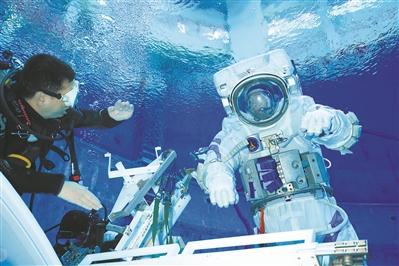He transformed his body into a "semi -robot", can AI really improve the quality of life?
Author:I am a scientist Time:2022.06.22
On June 15, British scientist Peter Stock Morgan, a British scientist who was suffering from gesture, died at the age of 64.
In the five years before his death, he regarded himself as a little white mouse, transformed himself into a "semi -robot" through multiple operations, and made "Peter 2.0" with the help of artificial intelligence and virtual technology.
Facing the danger of death, Peter chose a path that had never been walked, survived as "Suberg", and lived a different wonderful life.

Peter 2.0
Become Suber
In 2017, Peter's diagnosis of the diagnosis of the sideways (ALS), which is "felmeal".
Grave -frozen is a rare and fatal motor neuron disease. It is well known to the public because of the famous physicist Stephen Hawking.
People who are suffering from gradients will gradually lose their ability to move, control their limbs and trunk due to neuronal damage, and then cannot speak, control the eyeball rotation, or even breathe and swallow, and eventually die.
Faced with the diagnosis of only two years of life given by the doctor, Peter made a bold choice -becoming "Suber".
Cyborg is a combination of Cybernetics and ORGANISM (organism, organism, organic body). As the name implies, that is, any creature that combines organisms and electronic machines can be understood as semi -human and semi -mechanical creatures.
In order to become Siber, Peter underwent a series of physical transformation surgery:
Including a duct directly into the stomach and transporting nutrients; a catheter connects to the bladder to discharge urine; a catheter is connected to the colon to handle his excrement, cut off the throat to prevent the sputum from suffocation or enter the lungs into the lungs Infection ...
All of this is for the normal operation of various physiological functions, reducing the need for nursing needs such as other people to go to the toilet.
AI is a human partner
When he was young, he received a PhD in robotics at the Empire Institute of Technology in London. He had imagined that everyone and the machine were "symbiotic", but he did not expect that "symbiosis" would happen to himself.
To this end, Peter found the world's leading audio technology company to "retain" his voice; found the Matsuki Mosaic Factory in London to make a 3D virtual incarnation for himself; contact the wheelchair company Permobil to customize special wheelchairs to facilitate action.
The sound of AI synthesis is not enough, and Peter needs more tools to express his thoughts. Peter thought of the brain machine interface (BCI) technology. Many people think that BCI is likely to be the "ultimate means" to communicate with the outside world.
Peter also believes that in his heart, the ideal BCI is to detect the electrical motor of neurons through implantation of the electrode, develop decoding algorithms, directly translate patients' ideas and express them.
However, the structure of the human brain is too complicated, and it is not easy to identify and use it directly. At present, the Swiss WYSS Biological and Neurological Engineering Center cooperates with the research team of the University of Tipingen in Germany. They did not crack the patient's thoughts through the development of decoding algorithms. Method to obtain the intention of the patient.
The spelling speed of this technology is 1 character per minute. Obviously, such a spelling speed cannot meet Peter's requirements for text output efficiency and effect.
What to do? Peter has only one precedent for reference, that is -Hawking.
He found Intel's expected computing laboratory director Lama Nachiman. The laboratory director had developed a voice expression system ACAT (Assistive Context-Aware Toolkit) for Hawking. Facial muscle exercise "translates" Hawking's thoughts into words.

Hawking (died in 2018)
In communication, Rama Nachicman found that although they were scientists, Peter and Hawking had a very different attitude towards AI.
Hawking's attitude towards AI is controlled. He insists that there is almost 100%control over the system he operates. The content he output must be completely consistent with his ideas. Under this premise, it is difficult for AI to intervene.
And Peter is just the opposite. He is very optimistic about AI. He believes that AI is a partner and believes that AI can bring him an experience that he has never had before.
In the end, Peter chose eye tracking technology, like Hawking, typing with eyes and facial muscles. But unlike Hawking, in this process, Peter will actively accept suggestions provided by AI provided by deep neural network drive, and help improve AI's understanding of him and improve the accuracy of AI prediction.
Leave the spiritual heritage
On April 8, Peter said through social networks that his eyes were difficult to close and could not use eye tracking to communicate. Two months later, Peter's life stayed at the age of 64 forever.
In 5 years, Peter stubbornly fighting for fate. He founded the PSM Charity Foundation, which focused on disabled people and patients with illness, filmed a documentary that loves life, and published the autobiographical memoir "Peter 2.0" ... Peter told all of them with action to tell all the action What a wonderful thing is living.
Although Peter left, everything was a new beginning.
What can a Suber's death be left for human beings? Peter said: "Perhaps the death of biological does not mean ultimate death, and it will usher in a new era of human beings in the future."
- END -
Inspired by the parasitic berry, the new glue may be used for seal wounds

Science Fiction Network June 17 (Wang Ziyu) Recently, after seeing a sticky cricke...
Distant space, close concerns

Figure ①: In March 2022, astronauts Cai Xuzhe (right) and astronauts Zhao Yang (l...